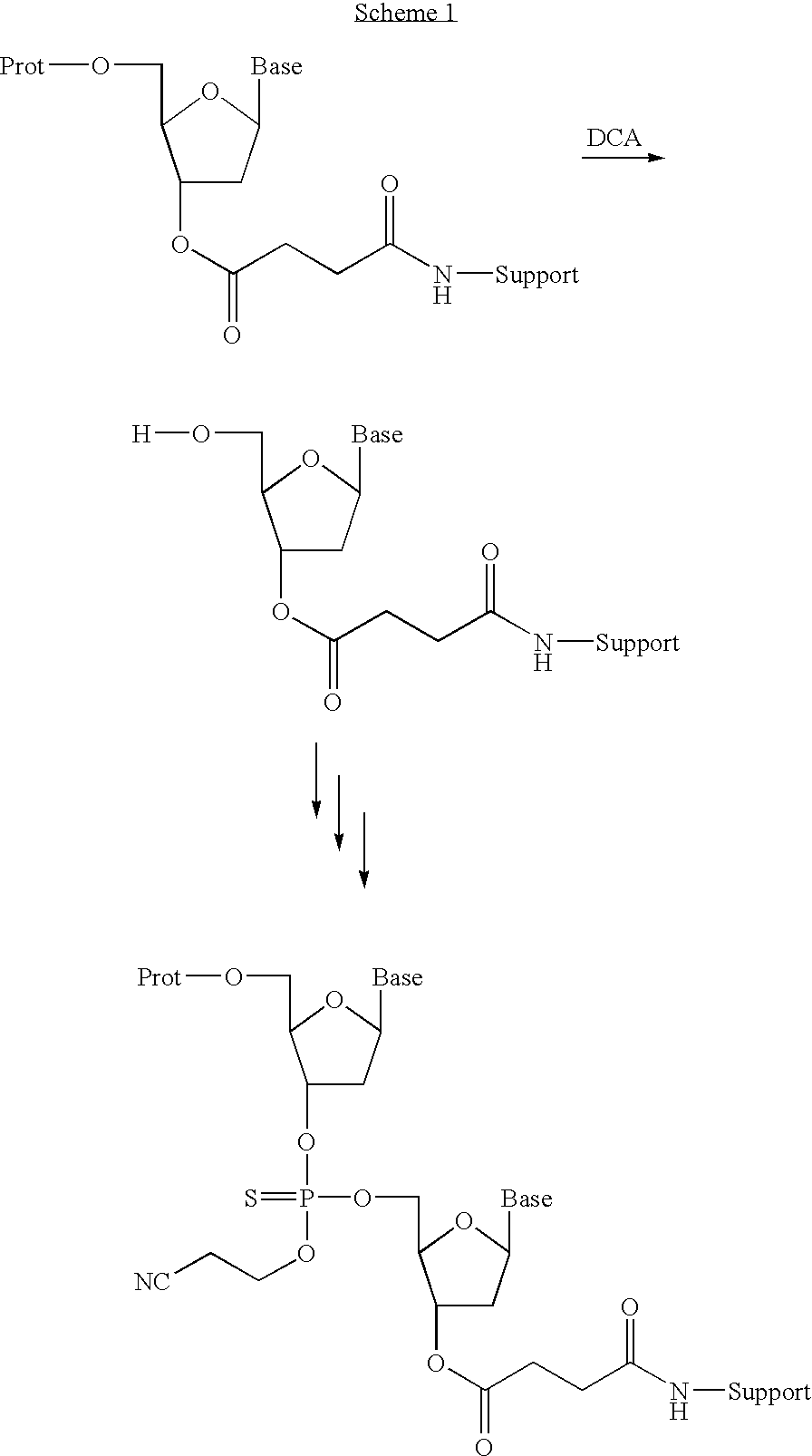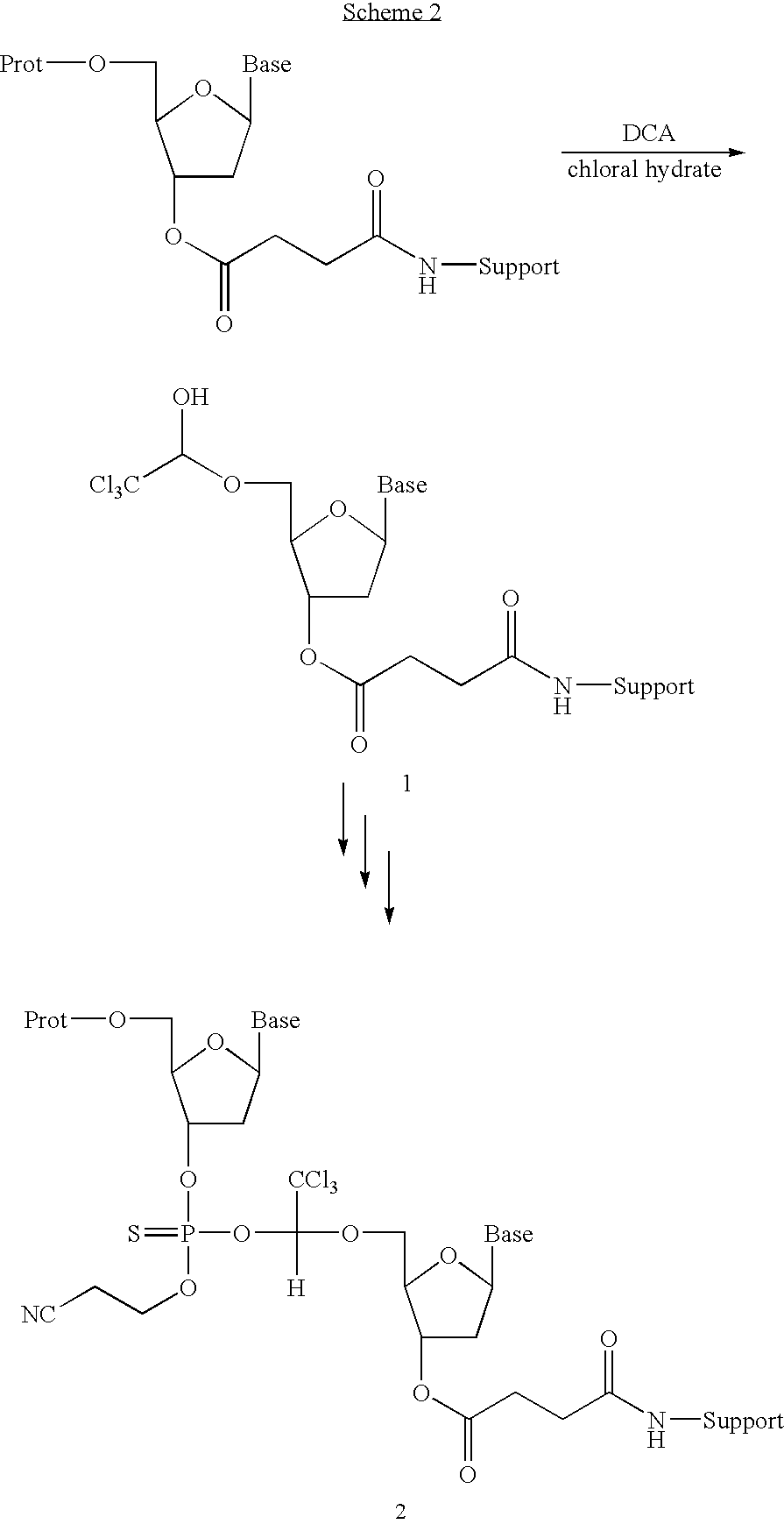Methods for detection of chloral hydrate in dichloroacetic acid
a dichloroacetic acid and chloral hydrate technology, applied in the field of new chloral hydrate detection methods, can solve the problems of chloral hydrate, chloral hydrate reacting, undesired side-products, etc., and achieve the effect of accurate measuremen
- Summary
- Abstract
- Description
- Claims
- Application Information
AI Technical Summary
Benefits of technology
Problems solved by technology
Method used
Image
Examples
example 1
Detection of Chloral Hydrate in Dichloroacetic Acid
[0050]A test sample of dichloroacetic acid (DCA, 0.15 mL) was dissolved in deuterated acetonitrile (0.5 mL) containing 40 ppm of toluene. 1H NMR spectra were collected using a Varian Unity 400 NMR spectrometer under the following conditions: 30 degree pulse, sweep width of 6997.9 Hz, 32 k complex points and a 45 second total recycle delay. Approximately 1000 transients were run for each sample. The data was processed by zero filling to 64 k complex points with an exponential line-broadening of 0.3 Hz. The first two points were reproduced through linear prediction to smooth base-line and further smoothed after FFT by spline fit.
[0051]The concentration of chloral hydrate was measured by comparing the integral of the peak associate with the CH proton on chloral hydrate with that of the CH3 group of toluene. Dichloroacetic acid was then used to prepare the 20 mer according to the procedure set forth in Example 2.
example 2
Preparation of (d(TpCpCpGpTpCpApTpCpGpCpTpCpCpTpCpApGpGpGp) [SEQ ID NO: 1]; wherein P═P(O)S−Na+.
[0052]5′-O-DMT-N2-isobutyryl-2′-deoxyguanosine derivatized Primer HL 30 support was packed into a steel reactor vessel. A solution of dichloroacetic acid in toluene (10%, v / v) was added to deprotect the protected hydroxy group and the product was washed with acetonitrile. A solution of 5′-O-DMT-N2-isobutyryl-2′-deoxyguanosine-3′-O-(2-cyanoethyl)-N,N-diisopropylphosphoramidite (0.2 M) and a solution of 1-H-tetrazole in acetonitrile (0.45 M) were added and allowed to react for 5 minutes at room temperature. A solution of phenylacetyl disulfide in 3-picoline-acetonitrile (0.2 M, 1:1, v / v) was added and allowed to react at room temperature for 2 minutes. The product was washed with acetonitrile (1:4 v / v) and N-methylimidazole-pyridine-acetonitrile (2:3:5, v / v / v). After 2 minutes the capping mixture was removed by washing the product with acetonitrile.
[0053]A solution of dichloroacetic acid in...
PUM
| Property | Measurement | Unit |
|---|---|---|
| v/v | aaaaa | aaaaa |
| pH | aaaaa | aaaaa |
| concentration | aaaaa | aaaaa |
Abstract
Description
Claims
Application Information
 Login to View More
Login to View More - R&D
- Intellectual Property
- Life Sciences
- Materials
- Tech Scout
- Unparalleled Data Quality
- Higher Quality Content
- 60% Fewer Hallucinations
Browse by: Latest US Patents, China's latest patents, Technical Efficacy Thesaurus, Application Domain, Technology Topic, Popular Technical Reports.
© 2025 PatSnap. All rights reserved.Legal|Privacy policy|Modern Slavery Act Transparency Statement|Sitemap|About US| Contact US: help@patsnap.com


